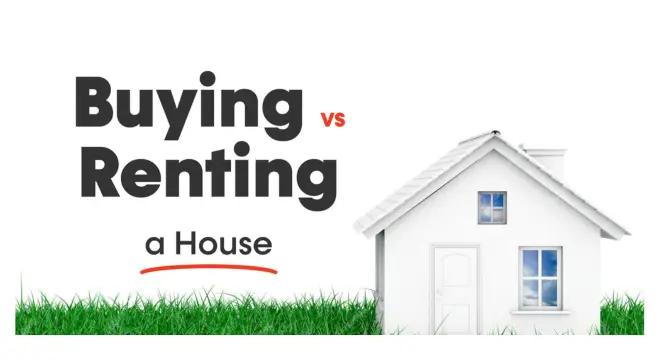Mortgage Rates Drop to 6.23% Following Fed’s Mixed Signals on Cuts
I remember seeing mortgage rates above 7% just a year ago, and honestly, it felt like buying a home was slipping further out of reach. Now, as I track the numbers, I see the 30-year fixed mortgage rate has dipped to 6.23% for the week ending November 26. That’s a small drop from last week’s 6.26%, but compared to 6.81% this time last year, it’s significant.
You might be wondering, “Does a quarter-point really matter?” It does—especially when you’re talking about monthly payments on a $300,000 loan. Even a small rate drop can save you hundreds each month and thousands over the life of the loan. That’s why I want to unpack what’s really driving these rates and how it can affect your next move.
The decline isn’t random. It’s tied closely to the 10-year U.S. Treasury yield, which mortgage rates tend to follow. When yields dip, as they recently have nearing the 4% mark, mortgage rates usually ease too. At the same time, the Federal Reserve is signaling a possible rate cut in December, though some policymakers remain concerned about inflation. These mixed signals create the delicate dance you see reflected in today’s rates.
So, while 6.23% might seem like just another number in the news, for someone like you planning to buy or refinance, it’s an opportunity worth understanding—and possibly acting on.
How Mortgage Rates Are Calculated?

When I first started looking at rates, I thought they were just numbers lenders pulled out of thin air. Turns out, there’s a method to the madness—and it’s one you should understand. Mortgage rates are closely tied to the 10-year U.S. Treasury yield, which reflects broader economic trends like inflation and growth. When the Treasury yield drops, mortgage rates generally follow.
Your lender doesn’t stop there. They factor in your personal financial profile—your credit score, loan amount, property type, down payment, and even the loan term. That’s why two people with the same loan amount might get very different rates.
According to Jake Krimmel, senior economist at Realtor, “Much of where the mortgage and the housing market is headed depends on the inflation and labor market outlook.” This insight really highlights how intertwined your personal rate is with the broader economy—something many first-time buyers overlook.
Understanding this connection helps you make smarter decisions. You’re not just chasing the lowest number in the news; you’re timing your move based on how these forces interact.
Credit Scores and How They Affect Your Rate
Let’s get real: your credit score matters. The higher it is, the lower the rate lenders are willing to offer you. A score above 740 usually gets you the best rates, while a “fair” 620 can still qualify for some conventional loans. If you’re going through the FHA route, some lenders will even approve scores as low as 500, though your rate will reflect the higher risk.
AP News highlights that lenders use these scores to determine your risk, alongside other factors like your down payment and loan size.
What I tell anyone looking at a mortgage is: check your credit early. Improving it by even 20–30 points can make a noticeable difference in your monthly payment. You want to be in control of this before talking to lenders.
What This Rate Drop Means for Homebuyers?
Here’s where it gets exciting for someone like you planning to buy. That 6.23% rate can translate into real savings on your monthly mortgage payment. For a $300,000 loan, it might save you a few hundred dollars each month compared to last year’s 6.8% average. Over the life of the loan, that adds up to tens of thousands.
It also gives you some flexibility. Lower rates can make homes that were previously out of reach suddenly affordable. I’d say it’s a good time to get pre-approved if your financials are solid—you’ll know exactly what you can afford without chasing news headlines.
But remember, not every market reacts the same way. Prices in some cities are still high, so the rate drop alone might not make a home truly affordable there. You have to consider location, inventory, and local demand, not just the headline number.
While lower mortgage rates help with monthly payments, it’s worth noting that certain markets still face challenges—like Florida condos, which recently saw the biggest price decline in 15 years as insurance and HOA costs climbed.
Opportunities for Refinancing

If you already own a home, this is where the 6.23% number really becomes actionable. Refinancing could lower your monthly payment, shorten your loan term, or reduce total interest paid.
I always recommend looking at closing costs versus potential savings. Sometimes people refinance too early and end up paying more in fees than they save. But if your existing mortgage rate is high and your credit score is good, this could be a chance to lock in a better deal before the end of the year.
It’s also worth noting that lenders have started offering more competitive pricing and financing, so you might find incentives that weren’t there a few months ago. For homeowners ready to act, timing can make a big difference.
I’ve seen some homeowners share real-time mortgage tips through messaging communities—sometimes even quick alerts help you catch the best refinancing windows.
Risks and Things to Watch
Now, I don’t want to oversell this drop. The reality is, rates aren’t guaranteed to stay this low. The Federal Reserve is divided—some policymakers want another cut, others are worried about inflation. That means rates could dip a bit more or bounce back depending on upcoming economic data.
You also have to consider your own profile. Not everyone qualifies for 6.23%. Lenders look at credit score, down payment, loan size, and property type. If your profile isn’t strong, the “average” rate might not even apply to you.
Finally, keep an eye on broader economic trends: inflation, job growth, and the Treasury market. These factors influence rates more than any single news headline. Understanding the risks will help you make smarter, confident decisions rather than reacting to fear or hype.
Not every region reacts the same—some areas are seeing home prices rise rapidly while others slow down, highlighting why local market trends are crucial to consider.
Forecast & Market Outlook for 2026
Looking ahead, I’m paying close attention to a few key signals that could shape mortgage rates in early 2026. Analysts expect rates to hover in the mid-6% range, assuming inflation cools and the labor market remains stable. But as someone considering a home purchase or refinance, you don’t have to wait passively—you can track the same indicators to make smarter moves.
The big things to watch are Fed decisions, Treasury yields, and upcoming economic data. If inflation shows signs of picking up again, rates could climb. Conversely, if the Fed delivers another cut, we might see rates dip even lower. I like to think of it as a game where the moves are predictable, but timing matters—you just need the right data to play strategically.
For you, the practical takeaway is simple: if your financial profile is strong and you’re ready to buy or refinance, getting pre-approved now gives you clarity. If not, monitoring the next few months for small shifts could help you time your move more effectively.
With pending home sales at high levels and buyers taking advantage of lower mortgage rates, there’s momentum building in some regions.
Quick Takeaways & Action Steps
Here’s how I would summarize everything if we were having coffee about this:
- Rates are lower than last year – 6.23% vs 6.81%, which can save you hundreds per month.
- Credit score matters – higher scores get better rates; improve yours if needed.
- Timing is key – keep an eye on Fed policy, inflation, and Treasury yields.
- Refinancing can be smart – especially if your current rate is high, but always weigh closing costs.
- Not every market reacts the same – high property prices or regional differences might limit the benefit of lower rates.
Personally, I would start by checking your credit and pre-approval options, then set alerts on Treasury yields and Fed announcements. Even small moves can make a big difference.
What about you? Are you thinking of buying a home soon, or could refinancing be the smarter play this year? I’d love to hear what your next step might be.
If you want to explore more insights about the U.S. housing market and mortgage trends, check out our Real Estate & Homeownership section.
Disclaimer: This article is for informational purposes only and does not constitute financial or legal advice. Mortgage rates and lending conditions can change, and individual circumstances vary. Always consult a qualified lender or financial advisor before making decisions.


